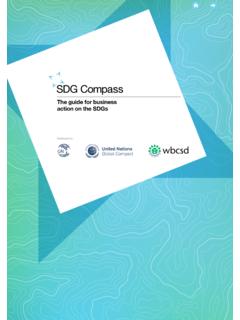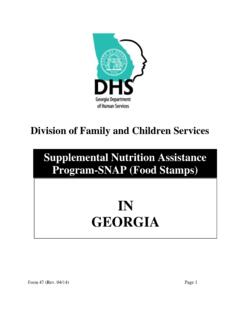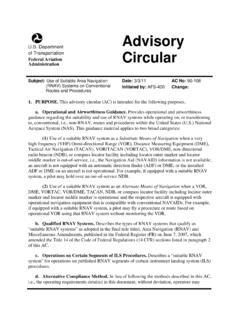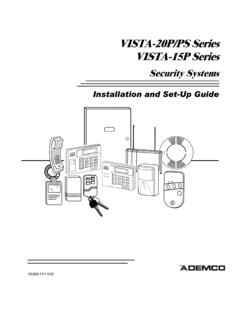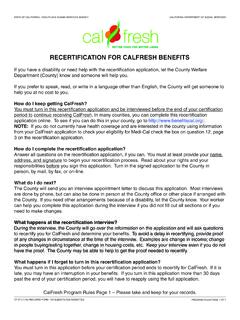Transcription of Research Based Interventions/Strategies
1 Research Based Interventions/Strategies The following Interventions/Strategies are broken into Reading Comprehension, Reading Fluency, Math Computation, and Math Reasoning. These are examples, not a list of the only Research Based interventions. The following websites are good resources for finding additional Research Based interventions. , Reading Comprehension: 1. "Click or Clunk?": A Student Comprehension Self-Check: Step 1: Tell students that they will be learning ways to read more carefully. Hand out student copies of My Reading Check Sheet (see attachment at the bottom of this page).
2 Review all of the reading strategies on the student handout. Instruct students that, during any reading assignment, when they come to: The end of each sentence, they should ask the question, "Did I understand this sentence?" If students understand the sentence, they say "Click!" and continue reading. If they do not understand, they say "Clunk!" and refer to the strategy sheet My Reading Check Sheet to correct the problem. The end of each paragraph, they should ask the question, "What did the paragraph say?" If they do not know the main idea(s) of the paragraph, students refer to the strategy sheet My Reading Check Sheet to correct the problem.
3 The end of each page, they should ask the question, "What do I remember?" If they do not remember sufficient information, students refer to the strategy sheet My Reading Check Sheet to correct the problem. Read through a sample passage with the class. At the end of each sentence, paragraph, and page, "think aloud" as you model use of the comprehension checks. (As you read each sentence, be sure to call out "Click!" when you and the class understand a sentence and "Clunk!" when you do not.) Step 2: When students have learned to use the "Click or Clunk?" strategy, have them use it in independent reading assignments.
4 2. Advanced Story Map: Step 1: Introduce the concept of a Story Grammar to students and preview main elements. (Refer to the Advanced Story Map Worksheetas a guide.) Tell students that a Story Grammar can help them to better understand a story's characters and events. Step 2: Set aside at least four successive instructional days to introduce the major components of the Story Grammar: (A) Identifying important characters and their personalities and motivation, (B) Identifying main problem and significant plot developments, (C) Noting characters' attempts to solve problems, and (D) Identifying a narrative's overarchingtheme.
5 Interactive Instruction: Make the instruction of each story component highly interactive, with clear teacher demonstration and use of examples. 'Think aloud' as you read through a story with the class to illustrate to students how you arrive at your conclusions. Elicit student discussion about the story. As you fill out sections of the Advanced Story Map Worksheet on the overhead, have students write responses on their own copies of the worksheet. Step 3: Error Correction: When students commit errors, direct them to the appropriate section of the narrative to reread it for the correct answer.
6 Use guiding questions and modeling as necessary to help students to come up with an appropriate response. Step 4: After students have been introduced to the key Story Grammar elements, the group is now ready to use the Grammar to analyze a sample narrative passage. Have students read independently through a story. Pause at pre-determined points to ask the group key questions ( , "Who is the main character? What is she like?"). After discussion, encourage students to write their answers on the Advanced Story Map Worksheet while you fill out the same worksheet as an overhead.
7 Give specific praise to students for appropriately identifying Story Grammar elements. Step 5: When students are able to use the Story Grammar independently, have them read through selected stories and complete the Advanced Story Map Worksheet on their own. Check students' responses and conference individually with those students requiring additional guidance and support. 3. Keywords: A Memorization Strategy: Step 1: Tell students that a good way to remember lots of facts is to use keywords. With the keyword approach, students: Highlight important facts or ideas in a passage Write a "gist" sentence that summarizes the highlighted ideas or facts Select a 'keyword' that will help them to recall a central idea about the article or passage.
8 Create a mental picture to remember the keyword, and then Add details to the mental picture or create a story around the keyword to memorize additional facts or ideas. If you have younger students ( , 5th grade or below), read through several sample passages with the group. Then display a drawing or collage that represents your own representation of the passage's main ideas as mental imagery. using a "think-aloud" approach, explain the mental imagery of the picture and show how it encapsulates the main facts of the original passage. Show students how they can more easily recall facts using this approach.
9 If you have older students ( , 6th grade or above), read through several sample passages with the group. Write a description of the mental imagery that you used to memorize the keyword and related facts. using a "think-aloud" approach, explain the mental imagery of your keyword and related story and show how the imagery encapsulates the main facts of the original passage. Show students how they can more easily recall facts using this approach. Step 2: Pair students off and give them a sample passage. Assign each pair of students to: Identify the main idea of the passage Write a "gist" sentence to summarize the passage's main idea and related important facts Select a keyword Based on the main idea Write out a description (or draw a picture) of the mental imagery that they will use to recall the main idea and important facts of the passage.
10 Step 3: When students are able to use the keyword strategy independently, have them use the technique when reading through expository passages. Monitor students' use of the method and their accuracy in recalling key facts. Conference individually with those students needing additional guidance and support. 4. Reading Recovery Program 5. Compass Learning 6. Mental Imagery: Improving Text Recall: Step 1: Tell students that they can remember more of what they read by: making pictures in their mind of what they are reading carefully studying pictures or illustrations that appear in their reading or text books Step 2: using a "think-aloud" approach, read through a short sample narrative or expository passage.
